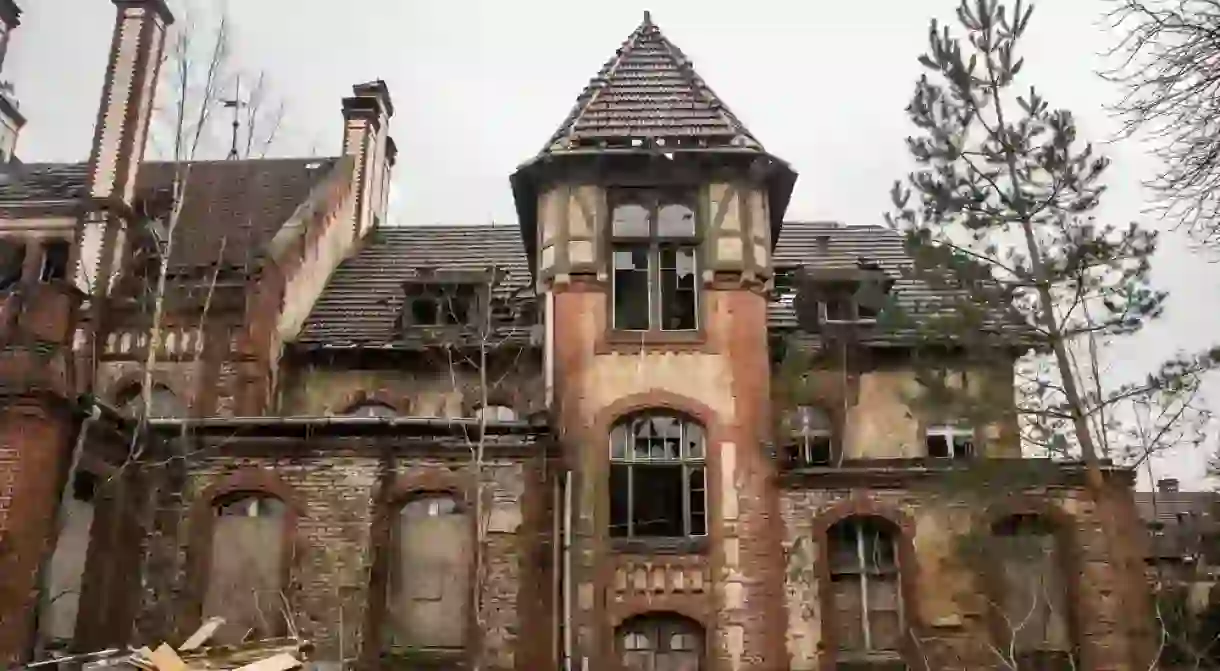The Top 10 Things to See and Do in Brandenburg, Germany

A tour of Germany’s Brandenburg state takes you to several nature parks, beautiful gardens, pompous palaces and some haunting remnants of the Nazi era. We compiled a list of the top things to see and do, so you can get started on planning your trip.
Explore the state capital
Historical Landmark

Brandenburg’s state capital is first and foremost known for Sanssouci Palace (which we’ll get to in a bit) but the city has more to offer. Potsdam is composed of a wide range of notable sights: the smaller rendition of Berlin’s Brandenburg Gate and St Nicholas Church, which was meticulously reconstructed after Allied bombing heavily damaged the church in World War II, for example. Or the Lindenstraße memorial site, a former-Nazi prison, which was later used by the Russian secret service and the Stasi, and which commemorates the harrowing experiences the inmates went through. Round the day off with a stroll past the red-brick, gabled houses of the Dutch Quarter and some fantastic food.
Marvel at the grandeur of Sanssouci Palace and Gardens
Building

Hide out in the romantic Spreewald forest
Historical Landmark
Chill under palm trees
Resort
Be humbled by a tour of KZ Sachsenhausen
Historical Landmark

Throughout Europe, countless memorial sites, internment camps and monuments commemorate the horrors of the Third Reich, purposely keeping them in the public consciousness of coming generations to help ensure history doesn’t repeat itself. The Sachsenhausen concentration camp played a unique role during the Nazi era: due to its vicinity to Berlin, which lies only 40 kilometres (25 miles) south, Sachsenhausen was not only one of the first camps to open, but its grounds also served as a training facility for SS personnel. In an ironic post-war turn of events, the Soviet government used the facilities to detain Nazi prisoners of war. A guided tour is humbling, educating and eye-opening at the same time.
See where German television is made
Historical Landmark, Architectural Landmark
What Universal Studios are to Los Angeles, the Babelsberg Studios are to Potsdam. They rank among the world’s first major film studios and even to this day see Hollywood stars use the facilities for their productions – Quentin Tarantino shot bits of Inglourious Basterds here, and George Clooney shot scenes for The Monuments Men. A guided tour grants a glimpse behind the scenes of filmmaking and tours the sets of widely popular German TV shows, shows props, costumes and technical equipment of renowned productions, and introduces you to several people working on set. You can even test your skills as a weather forecast presenter and take a seat in a 4D action cinema.
Explore a part of England within Germany
Historical Landmark, Architectural Landmark

The Babelsberg Park on the banks of the Havel River bears more lush nature for you to explore. Across 280 acres (114 hectares), the flawlessly maintained grounds are studded with sculptures and mosaics, Gothic fountains, a landscaped English garden and stunning views of the bordering Jungfernsee and Tiefer See lakes. The 1833 Babelsberg Palace is currently undergoing renovations and is closed to the public, but adds to the serene charm with its Gothic Revival façade.
Go birdwatching
Church, Park
Rise above the abandoned Beelitz-Heilstätten hospital
Stroll around Barnim Nature Park
Architectural Landmark, Historical Landmark
Covering 750 square kilometres (75,000 hectares) north of Berlin, the Barnim Nature Park is the ideal refuge if you want to get out of the buzzing city and reconnect with nature. The diverse landscape of mystical alder and beechwood forests, stunning lakes, pastures and moorlands can easily be explored as a day trip from both Berlin and Potsdam.













